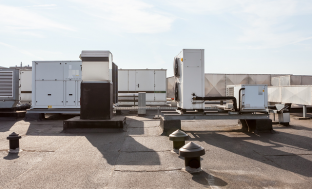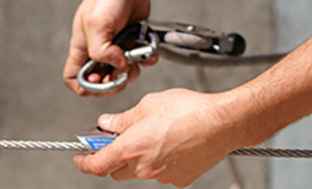latest news
Planning work at height properly: part one

By Chris Paterson, Business Development Manager, Roof Edge
Proper planning of work at height is vital and makes serious incidents less likely to occur. But do you know how to put this knowledge into practice?
You should always plan any work via audits and risk assessments, to ensure all requirements are met; this is hugely important to ensure any work carried out at height goes smoothly.
In this blog post we will take a look at the different facets of planning work at height: this will allow you to ensure any work that is carried out on your building or by your workers is safe and effective.
Work at height policy
Before you consider taking on any work at height you should make sure you have a work at height policy. This can be as simple as saying you don’t work at height under any circumstances, however the term ‘work at height’ covers a vast range of activities, so it is likely that you may eventually need to consider some variation of it.
You should look at how your employees, contractors, visitors and members of the public could be affected by any work at height activities; the policy you produce should be a strategic document, establishing procedures for working at height, and going into detail about what controls could be implemented.
You should also make sure that any roles and responsibilities are clearly defined. This could even include senior managers, with responsibility for ensuring the competence of any contractors.

Work at Height audit
With your work at height policy in place your next step should be to carry out an overall audit of any work at height activities, and ensure that all relevant procedures are covered. These include:
- Risk assessments: relevant parts should be completed and reviewed regularly,
- Inspections: has the equipment been inspected regularly with any relevant documentation completed? If you’re going to be using access equipment you should make sure it is maintained properly as well,
- Ladders: is there a ladder register, is it up to date and are items individually identifiable?
- Lanyards and harnesses: are the register and inspection sheets up to date? Are items individually identifiable, and are users properly trained with correct emergency and rescue procedures in place?
- Training: are all relevant personnel trained in equipment being used, are they trained in height awareness, and is that training up to date?
Assessing individual tasks
When you are setting tasks your responsibility will vary depending on who is carrying out the task and how they will be doing it.
If it is your employees doing the work, you will need to carry out a thorough risk assessment of what might be required, making sure you prepare a method statement for the work. If employing a contractor they should be expected to provide you with a suitable and sufficient risk assessment and method statement.
Ensure you also ask contractors for proof they are competent to do the work. This might include relevant insurance details, health and safety policy training records for the task and equipment being used, as well as maintenance and inspection records.
Remember: work at height is always a high risk activity so you must assess the risk as a continuous process, always at the forefront of your mind. In the next part of this blog, we will take a look at the importance of Dynamic Risk Assessments.





